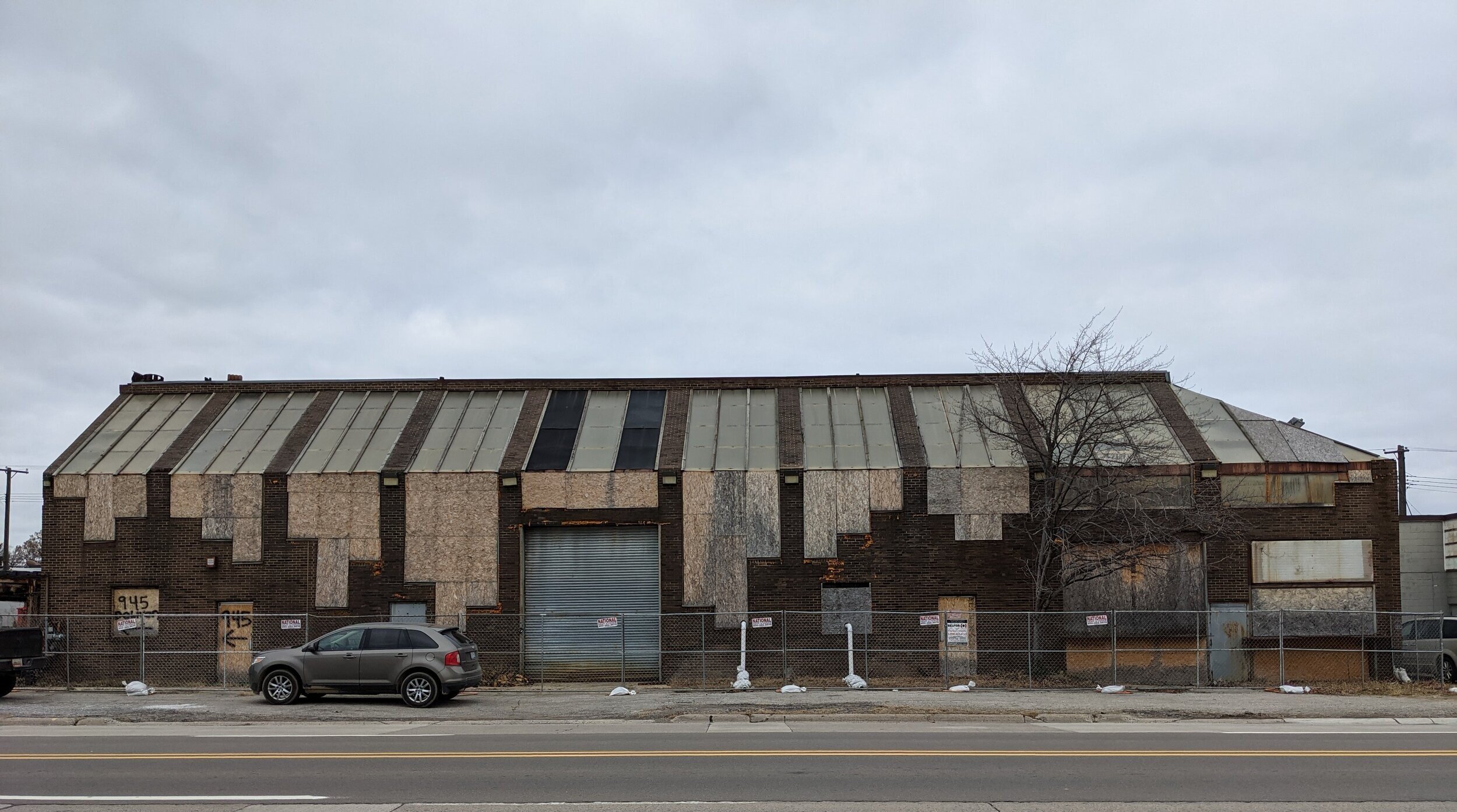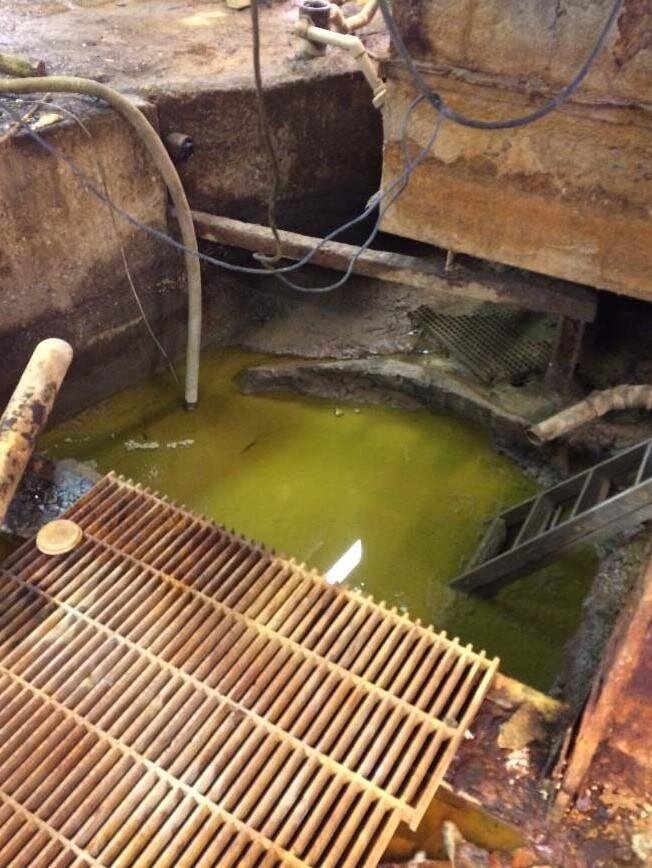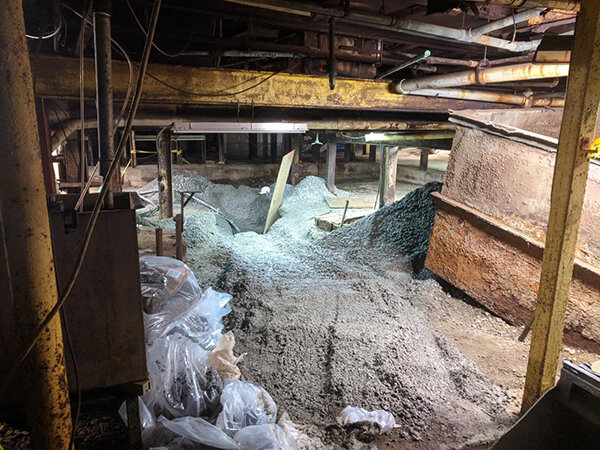
Sights, Sounds and Location
Madison Heights is quintessential industrial Detroit. Seated in the corridor of two major highways, the northern suburb of the Motor City is home to more than 1,300 commercial and industrial businesses — most of them related to the auto industry — within the city’s seven square miles.
Driving along Ten Mile Road, there are long, drab buildings for miles, lining the road with aging signs in need of a fresh coat of paint, interspersed with smaller buildings housing more auto-adjacent businesses. There are countless mechanics, a collision center or two and the occasional limo rental.
At 945 E. Ten Mile Road sits a shell of a building. It’s long, too, but not quite as big as many of the newer buildings on the street. There’s no sign anymore, and the building is boarded up with plywood stained with water damage. The yellowed skylight windows are clouded with grime and age; the dark brick has a strange golden foam plugging the parts worn away by harsh winters. The entire building is surrounded by a chain link fence sand bagged to keep from blowing away, and the only sound whistling around the forgotten building in early December is the sound of a vehicle as it either approaches or passes by.
945 E. Ten Mile Road, Madison Heights, MI — Formerly Electro-Plating Services
The Electro-Plating Services lettering that used to appear on a window at 945 E. Ten Mile Road. Courtesy of the U.S. Environmental Protection Agency.
A Clean-up Site Almost 30 Years in the Making
In 1967, Electro-Plating Services opened a Madison Heights location at 945 E. Ten Mile Road. It was one of two locations in Metro Detroit. The auto parts supplier was named for a specialized process, electroplating, in which a metal coating is adhered to a surface through an electric current. Auto suppliers use this process to help prevent corrosion in bumpers and a variety of other parts of the vehicle both externally and internally. Electro-Plating Services provided a key component in the automotive industrial food chain of Detroit along with countless other suppliers.
According to government documents, however, in the early 1990s, complaints began to roll in to the now-defunct Michigan Department of Natural Resources about the Madison Heights location. There were pits in the basement of the building on East Ten Mile Road where EPS was improperly dumping and storing toxic waste. Inspections followed that were failed repeatedly. The state issued more than a dozen violation notices from multiple agencies for not only the Madison Heights location, but eventually the other Detroit location also when EPS illegally transported hazardous waste there.
In December 2016 — 23 years after the initial documented violation — the also now-defunct Michigan Department of Environmental Quality issued a cease-and-desist EPS to stop all operations. State officials asked the U.S. EPA to assist in the clean-up, and then also opened a criminal investigation into Electro-Plating Services and its CEO Gary Sayers. Within a year of the cease-and-desist letter, the EPA had conducted a $1.5 million removal of “uncontrolled hazardous substances” from the East Ten Mile Road location.
But the clean-up wasn’t complete yet. In December 2019, two years after the EPA had concluded their removal procedure, fluorescent goo began to leak onto I-696. From a gap in the cement dividers along the edge of the highway, the waste oozed onto the road mixing with the ice and salt mix usually found on Michigan highways in the winter. The Michigan Department of Environment, Great Lakes and Energy quickly traced the leak back to the 945 E. Ten Mile Road location.

The pit of hazardous waste in the basement of 945 E. Ten Mile Road from 2017. Courtesy of U.S. EPA.

Hazardous waste leaking onto I-696 in December 2019 that was traced back to the former Electro-Plating Services building. Courtesy of the Michigan Department of Transportation.

Conditions in the basement of 945 E. Ten Mile Road in December 2017. Courtesy of U.S. EPA.

Continued excavation of 945 E. Ten Mile Road basement pit in 2019. Courtesy of U.S. EPA.
Almost 30 years, three state agency name changes and more than $1 million in tax payers’ money spent, the Electro-Plating Services site still needed cleaning.
The funds acquired from forfeited bottle return deposits are vital to cleaning up hazardous waste throughout Michigan. What will happen to sites like this if the allocation of unclaimed deposits changes?
